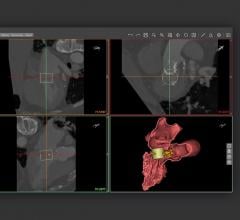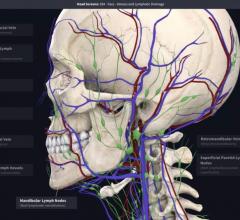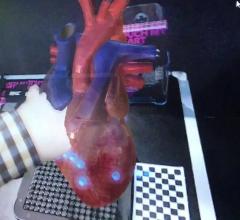
Is an evolution of sorts happening within advanced visualization?
The advanced visualization market has been primarily confined in the past to radiologists and because of that you really only needed a stand-alone workstation located where the radiologists/technologists used the system. There was not the need for full-featured thin-client – thin client is a way to provide centralized access to 3D images, functionality as well as the raw data. The value of 3D has become more widespread – partly due to the fact that the data sets are increasing. People are recognizing that not only does 3D add clinical value, but 3D also improves workflow efficiency. And with the right architecture it will increase the collaboration between clinicians. Now that 3D’s reach extends not only to radiologists, but also cardiologists, surgeons, oncologists, physicians in the ER and referring physicians, it truly is an enterprise-wide tool that needs to be everywhere. Now physicians are saying that they want access to a patient’s 3D image and they want to not only view it on PACS, but they want to interact with it.
Barriers to radiologists and doctors using 3D have included the time involved, and the systems in the past have been very cumbersome to use and the interface has been overwhelming. The way to address these barriers – or pain points – is first of all to address accessibility. What some companies have done is created what I call a hybrid product model where they still have the stand-alone workstation— and they still require a stand-alone for full functionality — but they’ll add a thin client or remote access component. This is counterproductive for users.
So the architecture is really where it starts. Unlike other vendors who patch together solutions, Ziosoft has had a unified thin-client solution from the beginning; we are a software company requiring no specialized GPU or proprietary hardware. You won’t even find a stand-alone workstation on our price sheet.
Is a thin-client solution more attractive to the end-user?
Not all thin-client solutions are the same. You can have an all thin-client solution, but only provide what I call “pretty pictures” – where your functionality only goes so far. Ziosoft’s thin-client solution is very attractive because all of the functionality of a stand-alone system can be accessed in various points in the enterprise. You don’t have to go to a stand-alone workstation for robust functionalities and to the thin-client for less robust functionalities. With over 10 years of experience we’ve been able to evolve our applications into a very robust suite of products. With robust functionality you can perform not only simple applications such as MIP, MPR and volume rendering on a thin client, but you can also perform sophisticated applications such cardiac function analysis, brain perfusion, coronary analysis, vessel analysis, and auto segmentation. These are functionalities that traditionally resided on stand-alone workstations. However, as the sophistication of the end users grows, you need that full suite of applications, otherwise you’re leaving a whole group of users out.
What features should customers look for in an Advanced Visualization solution?
The architecture is one thing, and the functionality of that architecture is another. You have to ask that extra question. First of all you want to know if they have a true thin client, meaning no stand-alone workstations, no patched together solutions. A true thin client has a server-side rendering engine, meaning all the processing horsepower is done centrally and the raw images do not have to be pushed around the network. That is one of the biggest downfalls of a stand-alone workstation - or the thick-client model. Hospital networks are getting faster but they can only handle so much traffic and if you have to push these images around the hospital, it is very inefficient, it bogs down the network and it discourages sharing of that information among different users. So keeping that dataset central and not having it move and then having only the results streamed to the client workstation is a true thin-client solution.
Extending the reach of 3D starts with the architecture, but without the accessibility, the functionality is useless. And so, sophisticated functionalities need to be available on thin-client and they need to go deep. All coronary analysis is not created equal and not all cardiac function analysis is created equal. Customers need to evaluate how sophisticated a solution is and not rely solely on vendor claims.
Image integrity is also important. Some vendors will sacrifice image integrity in order to get the images and results to remote locations at low bandwidth. They will downsample or compress the image. Our images are always lossless. We maintain the full image integrity of the study.
Ziosoft also has a Web-based client application that requires no software (e.g. ActiveX, applets) to be installed on the thin client. You can literally walk up to any browser with Internet Explorer and access as well as interact with the same images from the same server from home, the airport or from your hotel.
There are three variables involved: the functionality, the bandwidth – the accessibility – and there is image integrity. You have to balance these things. With the Web client you really don’t need all the functionality from your home, the airport or hotel, etc. This optional application is growing in popularity because more and more physicians want the accessibility to images wherever they are in the world. They are willing to sacrifice some functionality to get the accessibility, but they will not sacrifice image integrity. Ziosoft always provides the lossless image whether it be on a thin client or Web client.

 May 12, 2020
May 12, 2020 








